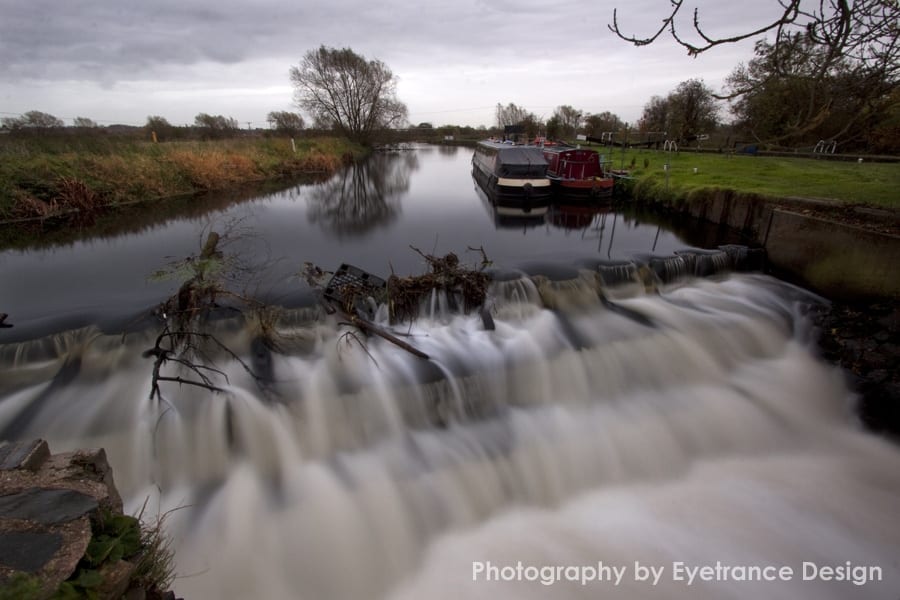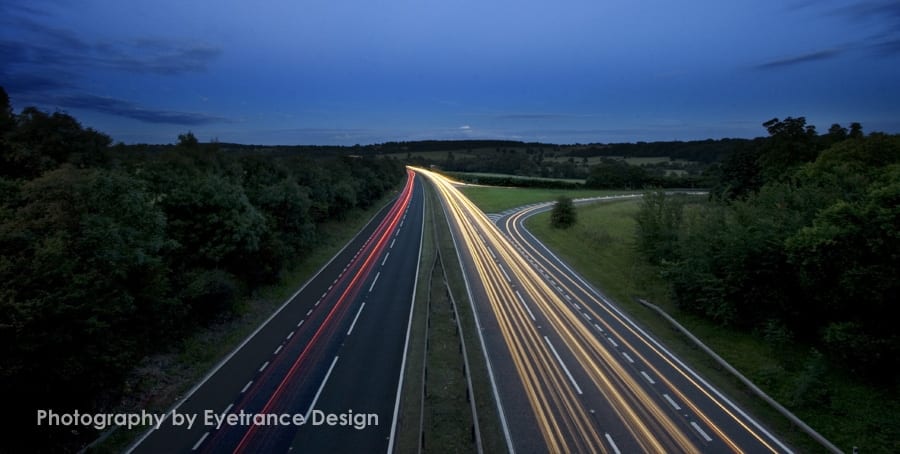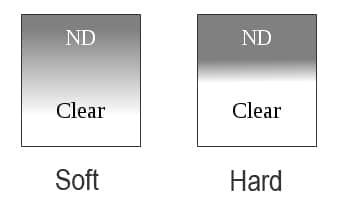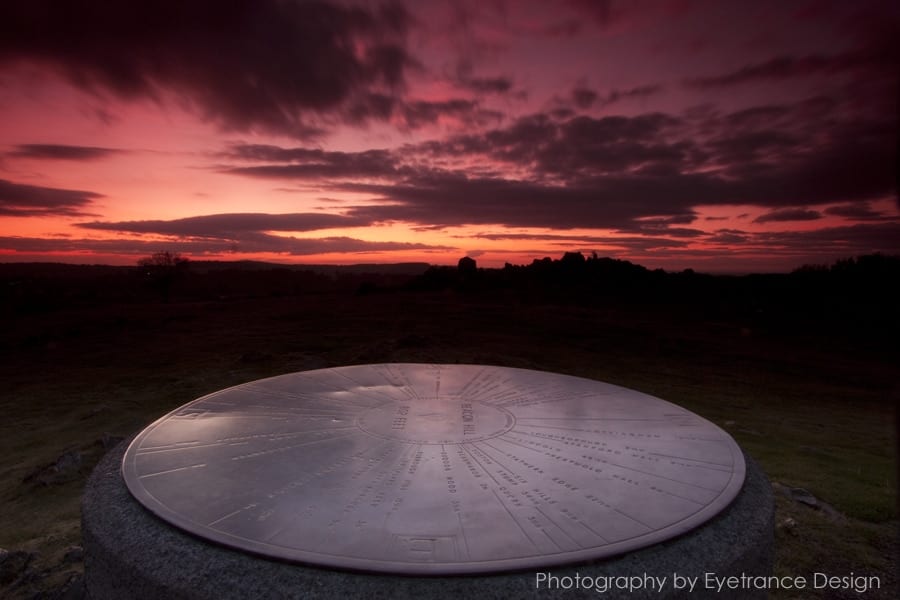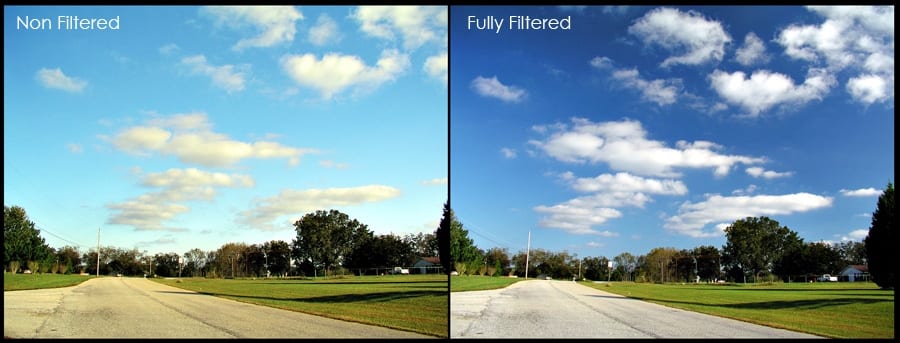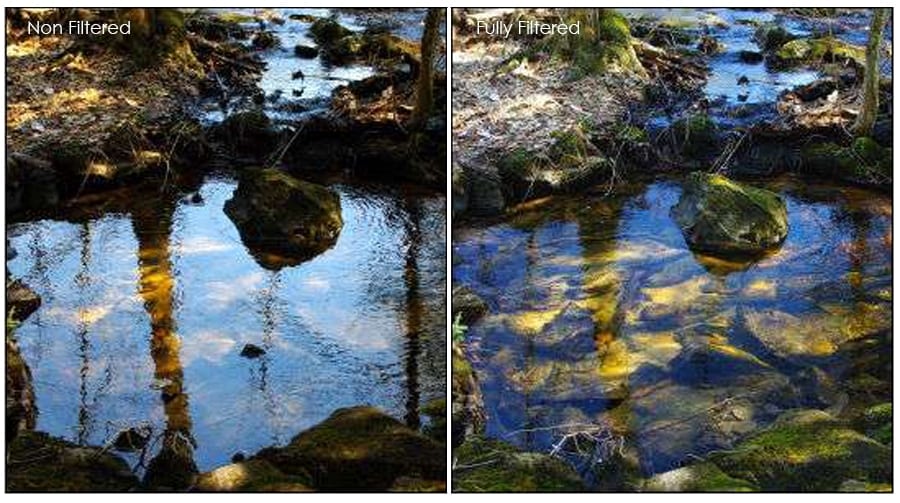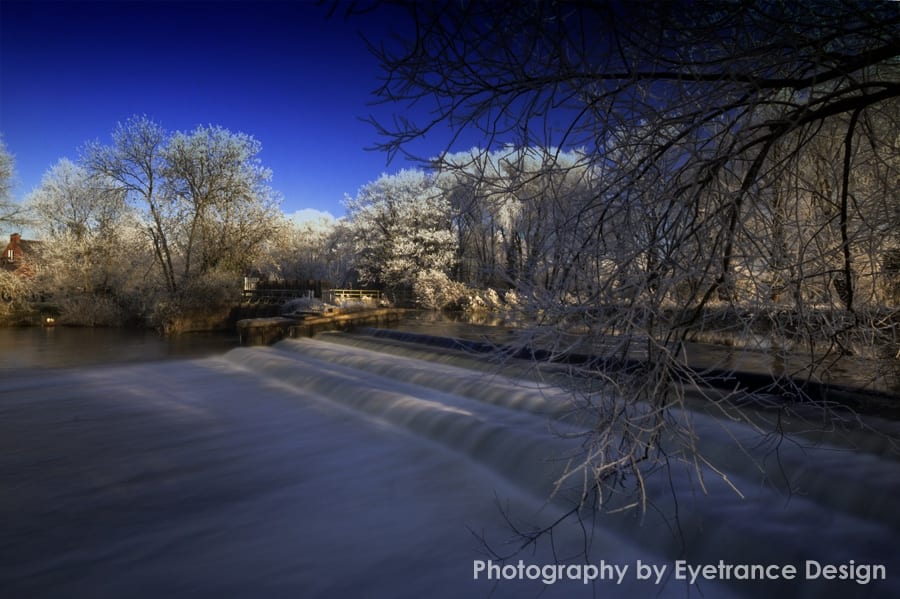Filters and photography go back a long way, especially before the advent of digital cameras. Using film without an appropriate colour filter in indoor lit areas would produce a green colour cast for fluorescent lighting or an orange colour cast for tungsten lighting. Filters were used to colour-correct these anomalies.
Filters were also able to produce some remarkable results in monochrome photography. For example, placing a red filter in front of a lens resulted in the blue sky turning almost black and produced stunning contrast for white clouds. Special effect filters were also available. Using a grid filter while taking shots of city streets at night produced the classic six-point starburst effect from street lights.
When digital cameras arrived, and technology progressed, the need for some filters disappeared. No longer do we need filters for indoor-lit areas; we set the camera, so it knows the scene is lit by tungsten or fluorescent light, or bright or cloudy daylight or flashlight. However, digital cameras are not fool-proof, and the need for filters still has its place for certain creative and challenging situations.
In this article, we’re going to look at the role of Neutral Density (ND) filters and Circular Polarising (CP) Filters and how they can enhance digital photography techniques.
ND Filters:
There are two types of ND filter; full ND (sometimes referred to as ND) and Graduated ND. Both serve the same purpose but apply to different situations with differing effects.
The purpose of an ND filter is to cut down the amount of light entering the camera and hitting the sensor without altering the colour aspect of that light. ND filters can be round glass that screws onto the front of a lens. Makers like Hoya produce this kind of filter. Other manufacturers such as Cokin produce square glass/plastic that is held in front of the lens using a special adaptor.
ND filters come in increasing strengths; the stronger the filter, the more light is restricted from hitting the sensor. The strength of the filter refers to how many stops of light is restricted (a stop is a single step reduction in aperture size that would prevent the equivalent amount of light entering had the filter not been there). The strength of a filter is denoted by a number. So, for example, a circular Hoya filter can be denoted as ND2x while Cokin would produce the equivalent as simple ND2.
The following table shows the relationship between the ND Number notation, the equivalent F-stop reduction and how much light is allowed to pass through the filter as a percentage value.
ND Number Notation F-Stop Reduction % Transmittance
ND2 1 50%
ND4 2 25 %
ND8 3 12.50%
ND16 4 6.25 %
ND32 5 3.13%
ND64 6 1.563 %
ND100 6 2/3 1%
ND128 7 0.78%
ND256 8 0.39%
ND400 8 2/3 0.25%
ND512 9 0.20%
ND1024 (also called ND1000) 10 0.10%
ND2048 11 0.05%
ND4096 12 0.02%
ND8192 13 0.01%
Full ND filters are useful for extending the exposure time without overexposure. This is especially useful in certain aspects. For example, in the shot below, a circular full ND8x filter was used to extend the exposure time to produce motion in the water falling over the weir without over-exposing the sky.
The next shot shows how a circular NDx4 can be used in light trails photography capturing the movement of vehicles along a major dual carriageway.

Graduated ND Filters
As the name suggests graduated ND filters restrict light from one end of the filter with the effect reducing to zero at the opposite side of the filter. The degree of reduction in restriction of light can reduce gradually and uniformly across the filter (soft) or can be consistent across one half reducing quickly to zero across into the other half (hard).
Graduated filters come into their own when faced with scenes of extremely bright light.
A good example is a very bright sunlit sky and averagely exposed landscape. Exposing for the landscape and deploying a graduated ND filter will result in a properly exposed sky. Without the filter, the sky would be blown out and digital detail lost.
Sunsets and sunrises are another application. Usually, shots of this type fool the camera into exposing for the sky resulting in the foreground as a black silhouette. Exposing for the foreground would require an exposure time that would result in the sky completely blown out. Using a hard graduated ND filter will allow an exposure time to allow the camera to capture the detail in the foreground while exposing the sky correctly.
The image below of a Toposcope was taken in front of a bright sunset. Using a hard Graduated ND filter, the camera exposes for the light reflecting off the surface of the Toposcope while preventing overexposure of the sky.
Be careful when using filters on ultra wide angle lenses. The designs of these lenses are such that the ring collar located at the very front of the lens does not show when set to the widest angle. Adding filters can produce a circular shadow that is predominant in the corners of the image. It may be easier to slightly increase the focal length to compensate than try to clone out the shadows in the final image.
Polarising Filters
Polarising filters are similar to ND filters in that they reduce light entering the camera. Unlike ND filters, that affects the amount of light and not colour; polarising filters do both. Light becomes polarised when it is reflected off non-metallic surfaces such as water or glass. Explaining polarisation is a bit tricky without delving into a whole bunch of physics, but here we’ll try and simplify the idea.
Light is electromagnetic energy that can be visualised as travelling in 2 sets of waves, electric and magnetic, that are perpendicular to each other. Light waves also contain a visible spectrum of colours as seen in rainbows. The reason we see things in colour is that objects absorb specific colours of the spectrum and reflect the remaining colours that our eyes see. That’s why a banana is yellow; leaves are green etc.
When light waves are reflected off non-metallic surfaces, the properties of the wave are affected in such a way that one part of the wave is absorbed leaving the remaining perpendicular wave to travel off the surface. The light has become polarised. We see the effects of polarisation when light is reflected off glass or water. The view through the glass or water is obscured by a glare.
Polarisation can also happen by other particles in the atmosphere. For example, parts of the sky appear a light blue when in fact, if polarisation were not taking place, it would be a darker blue.
When we consider the phenomena in relation to photography, the degree of polarisation also depends on the position of the sun, which in turn affects the angle of reflection of sunlight off a non-metallic surface.
An easy way to visualise this is to imagine a camera facing a reflective sheet of clear Perspex say, 10 feet in front of it. Now imagine the camera and Perspex enclosed in a large dome. Depending on where the sun is positioned on the surface of the dome, this will affect the angle and amount of light reflected off the Perspex and therefore the degree of polarised light entering the camera.
As the sun’s position moves, as it would across the sky in a typical day, the angle and amount of light reflected off the Perspex and therefore the degree of polarised light entering the camera changes. The practical effect of this is a colour change. A polarising filter cuts out those light rays that have been polarised through reflection leaving unaffected light to pass through.
In the days of film, the orientation of polarising filters was not a factor, but because it affects the metering and autofocus facilities in digital cameras, we now use circular polarising filters.
These filters contain a fitting ring which screws onto the front of a lens and a rotating front polarising lens. By rotating the front lens while viewing the scene through the viewfinder, the degree of filtering can be seen from zero to full. The following examples show the effect.
As you can see, the results can be quite dramatic. Polarising lenses also have the effect of enhancing the green in foliage as moisture within leaves also polarises light.
Some argue that using colour channels in Photoshop can produce the same colour-enhancing effects to sky and foliage. However, situations such as water reflection cannot be rectified by software. This is because the white reflection of light destroys any digital detail below the surface of the water. The same goes for glass. No amount of colour enhancement will remove the reflected light and detail behind the reflection is lost.
The critical thing to remember is that when a filter is removing polarised light at its optimum setting, the amount of light entering the camera is also reduced. This can affect such aspects as required aperture (if the depth of field is essential) or shutter speed. In relation to the latter, it’s vital to check how much shutter speed is affected as you rotate the filter from non-polarisation removal to full. The shutter speed may be affected to such a degree that a tripod is required to avoid camera shake.
Like ND filters, beware of using polarising filters on ultra wide angle lenses. The same corner shadow effects can occur. Always check the widest setting possible through the viewfinder to avoid this unwanted effect.
The following image shows what can be achieved by combining an ND2x filter with a circular polarising filter.
Both filters are cutting down the amount of light entering the camera thus slowing down the shutter speed and causing the exposure to give a sense of flow to the water over the weir. Also, with the polarising filter set to maximum, the sky adopts a deep blue crisp winter morning feel.
Experiment with filters and you will see a real creative improvement in your photography.
Enrol on the IOP Professional Diploma in Photography for just £45 per month interest-free or £450 one-off enrolment fee.

